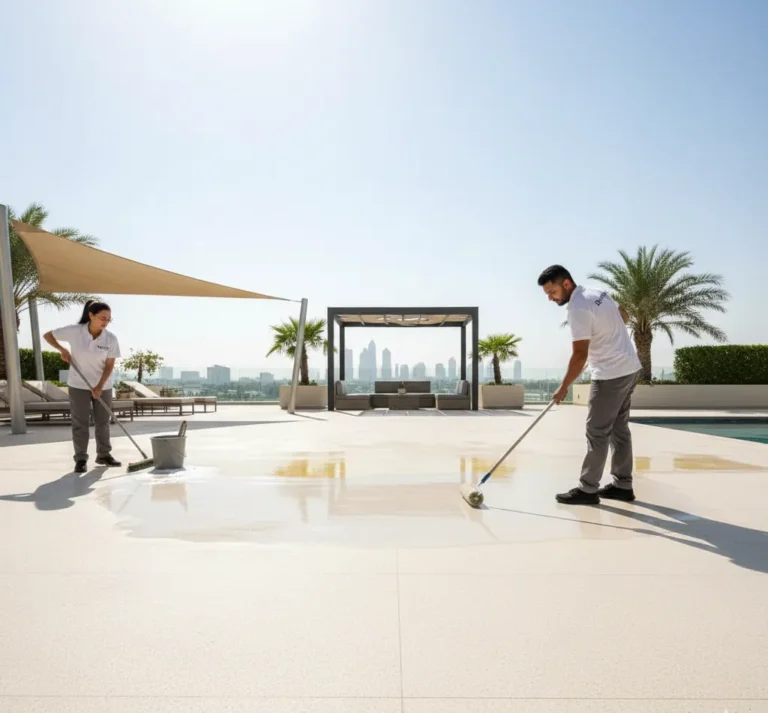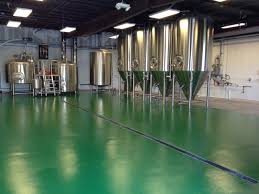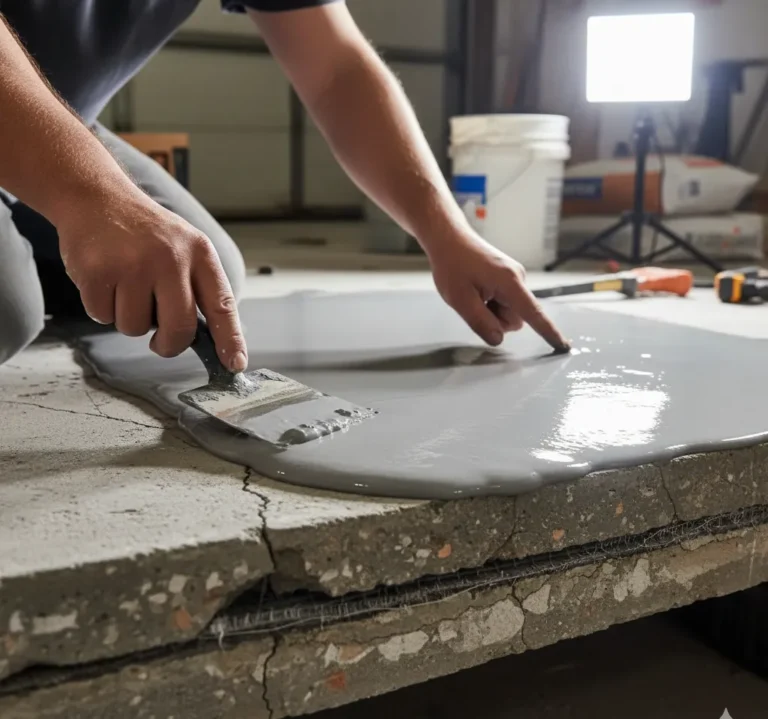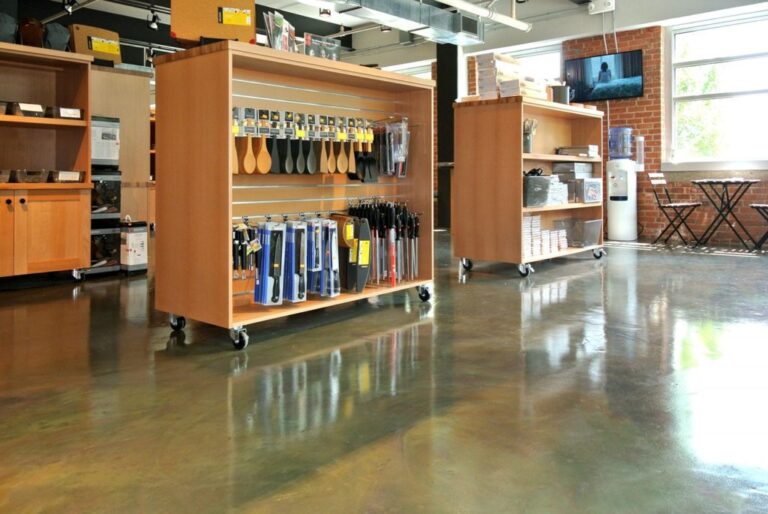Microcement Floor: Colors and Cost (per square foot) 2024
Microcement has taken the interior design world by storm, offering a sleek and modern alternative to traditional flooring and wall finishes. This versatile material has gained popularity due to its seamless appearance, durability, and wide range of colour options. As more homeowners and designers discover the benefits of microcement, it’s becoming a go-to choice for creating stunning, contemporary spaces.
The Versatility of Microcement Colours
Microcement Floor Colours
Microcement floor colours offer a vast palette of options to suit any design aesthetic. From cool greys to warm earth tones, the possibilities are endless. When choosing the right colour for your space, consider the overall ambiance you want to create and how the microcement will complement existing elements in the room.
Popular microcement floor colours include:
- Soft greys
- Warm beiges
- Crisp whites
- Rich charcoals
- Earthy browns
To select the perfect hue, consider factors such as:
- Natural light in the room
- Existing colour scheme
- Desired atmosphere (e.g., calm, energetic, sophisticated)
Microcement Bathroom Colours
Microcement bathroom colours can transform your space into a luxurious oasis. Trending colours for microcement bathrooms often lean towards soothing, spa-like tones that create a sense of tranquility.
When designing a cohesive bathroom with microcement, consider the following tips:
- Choose complementary colours for fixtures and accessories
- Use lighting to enhance the microcement’s texture and colour
- Incorporate natural elements like wood or stone to balance the modern look
Popular microcement bathroom colours include:
|
Colour |
Mood |
Best Paired With |
|
Soft Blue |
Calming |
White fixtures, natural wood |
|
Warm Taupe |
Cozy |
Bronze accents, cream tiles |
|
Light Grey |
Modern |
Chrome fixtures, glass elements |
|
Sage Green |
Refreshing |
White marble, brass hardware |
Microcement Colours
Microcement colours offer endless customization options and finishes. The colour selection significantly impacts the overall aesthetic of your space, setting the tone for the entire room. Microcement can be tinted to match virtually any colour, allowing for perfect coordination with your design vision.
Customization options include:
- Solid colours
- Marbled effects
- Textured finishes
- Metallic sheens
When selecting microcement colours, consider:
- The room’s function
- Desired maintenance level
- Long-term design flexibility
Microcement Floor: A Modern Flooring Solution 
Benefits of Using Microcement for Flooring
Microcement floors offer numerous advantages over traditional flooring materials. Their seamless appearance creates a modern, spacious feel, while their durability ensures long-lasting beauty. Duraamen, a leading provider of microcement solutions, highlights the following benefits:
- Seamless, joint-free surface
- Excellent resistance to wear and tear
- Easy to clean and maintain
- Compatible with underfloor heating systems
- Customizable colours and finishes
Ideal Spaces for Microcement Floors
Microcement floors are versatile and can be used in various settings. Some ideal spaces include:
- Living rooms and open-plan areas
- Kitchens and dining rooms
- Bathrooms and wet rooms
- Commercial spaces like offices and retail stores
- Outdoor areas such as patios and pool decks
Understanding Microcement Cost
When considering microcement for your project, it’s essential to understand the factors that influence its cost. The quality of materials plays a significant role in determining the overall price. Higher-quality microcement products, like those offered by Duraamen, may have a higher upfront cost but often result in better durability and longevity.
Factors affecting microcement cost include:
- Quality of materials
- Project size and complexity
- Surface preparation requirements
- Labour costs for skilled applicators
Microcement Cost Per Square Foot
The average cost per square foot for microcement can vary depending on several factors. Generally, microcement costs range from 5 to 0 per square foot. However, this price can fluctuate based on:
- Geographic location
- Complexity of the design
- Chosen finish and colour
- Level of surface preparation required
To get an accurate estimate for your project, it’s best to consult with a professional microcement applicator who can assess your specific needs and provide a detailed quote.
Factors Influencing Microcement Cost
Condition of the Surface
The condition of the existing surface plays a crucial role in determining the overall cost of a microcement project. Proper surface preparation is essential for achieving a flawless finish and ensuring the longevity of the microcement application.
Factors that can impact surface preparation costs:
- Existing surface material (e.g., concrete, tile, wood)
- Level of repair needed (cracks, unevenness)
- Removal of old flooring or coatings
- Moisture issues that require mitigation
Complexity of the Project
Project complexity significantly affects the pricing of microcement applications. More intricate designs or challenging spaces may require additional time, skill, and materials, thus increasing the overall cost.
Examples of complex microcement applications:
- Curved or irregular surfaces
- Intricate patterns or multi-colour designs
- Vertical applications (walls, stairs)
- Integration with other materials or features
Professionalism of Applicators
The skill and experience of the microcement applicators play a crucial role in both the quality of the finished product and the overall cost. Professional applicators with extensive training and experience may charge higher rates, but their expertise often results in superior outcomes.
Tips for choosing the right professional:
- Check portfolios and past projects
- Read client reviews and testimonials
- Verify certifications and training
- Ask about warranty and after-service support
Microcement in Bathrooms: A Preferred Choice 
Microcement Bathroom Cost
Microcement has become a popular choice for bathroom renovations due to its waterproof properties and seamless finish. The cost of a microcement bathroom can vary depending on factors such as:
- Size of the bathroom
- Extent of coverage (floors, walls, shower area)
- Complexity of the design
- Additional features (e.g., built-in shelves, custom niches)
On average, a microcement bathroom renovation can cost between ,000 to 0,000, depending on the scope of the project.
Advantages of Microcement in Bathrooms
Microcement offers several benefits that make it an excellent choice for bathroom applications:
- Waterproof and mold-resistant
- Seamless finish for easy cleaning
- Slip-resistant options available
- Customizable colours and textures
- Ability to create a spa-like atmosphere
Maintenance of microcement in bathrooms is relatively simple, requiring regular cleaning with mild soap and water to maintain its appearance and durability.
Microcement Flooring: Stylish and Cost-Effective
Detailed Cost Analysis for Microcement Flooring
When considering microcement flooring, it’s important to break down the costs involved to understand the overall investment. Here’s a detailed cost analysis:
|
Cost Component |
Percentage of Total Cost |
Description |
|
Materials |
30-40% |
Microcement, primers, sealers |
|
Labour |
40-50% |
Surface preparation, application |
|
Equipment |
5-10% |
Specialized tools and machinery |
|
Overhead |
10-15% |
Project management, transportation |
Long-term cost benefits of microcement floors include:
- Reduced maintenance expenses
- Increased property value
- Energy efficiency when combined with underfloor heating
Compatibility with Underfloor Heating
Microcement works exceptionally well with underfloor heating systems, offering several advantages:
- Excellent heat conductivity
- Even heat distribution
- Quick heat-up and cool-down times
- Energy-efficient heating solution
When installing microcement over underfloor heating, it’s crucial to work with experienced professionals who understand the specific requirements for this application. Microcement manufacturers explored Companies that make special cement for thin coatings were looked at Different brands and types of microcement products were checked out Minimalist microcement sink is a sleek and simple bathroom fixture made from smooth concrete-like material It gives a modern look without fancy details and is easy to clean
Microcement surface imperfections Tiny bumps or marks can sometimes appear on microcement floors and walls These small flaws are normal and add character to the unique look of microcement surfaces Microcement flooring aesthetics
Durable museum surfaces are special materials used in museums that can withstand lots of touching and cleaning without getting damaged These surfaces help protect exhibits and make sure they stay in good condition for a long time Microcement showcases elevate boutique displays by adding a sleek and modern look to store shelves and counters The smooth finish of microcement helps products stand out and creates an upscale feel for shoppers
Contemporary museum coatings are special protective layers applied to artwork and artifacts in museums These coatings help preserve and protect valuable items from damage caused by light humidity and other environmental factors Sleek microcement surfaces are smooth and modern-looking floors or walls They are made by applying thin layers of a special cement mixture to create a seamless and stylish finish
Contemporary microcement kitchen offers a sleek and modern look with smooth surfaces that are easy to clean and maintain
Comparing Microcement Price with Other Materials
While both microcement and polished concrete offer sleek, modern finishes, they differ in several aspects:
|
Aspect |
Microcement |
Polished Concrete |
|
Cost |
5-0 per sq ft |
-5 per sq ft |
|
Thickness |
2-3mm |
Existing slab |
|
Application |
Can be applied over existing surfaces |
Requires grinding of existing concrete |
|
Customization |
Highly customizable colours and textures |
Limited colour options |
|
Maintenance |
Low maintenance |
Regular polishing required |
Microcement vs. Traditional Flooring Materials
Compared to traditional flooring options, microcement offers unique advantages:
- Seamless finish without grout lines
- Thinner application, ideal for renovations
- Highly durable and long-lasting
- Customizable colours and textures
- Suitable for both indoor and outdoor use
While the initial cost of microcement may be higher than some traditional materials, its longevity and low maintenance requirements often make it a cost-effective choice in the long run.
FAQs
What are the most popular microcement floor colours?
The most popular microcement floor colours tend to be neutral tones that create a modern and versatile backdrop for various design styles. Shades of grey, from light dove to deep charcoal, are particularly favoured for their ability to complement a wide range of decor. Warm beiges and cool whites are also popular choices, offering a clean and timeless look.
How much does microcement cost per square foot?
Microcement typically costs between 5 to 0 per square foot, depending on various factors such as the complexity of the project, the condition of the existing surface, and the chosen finish. This price range includes both materials and professional installation. Keep in mind that larger projects may benefit from economies of scale, potentially reducing the per-square-foot cost.
Is microcement a good choice for bathrooms?
Microcement is an excellent choice for bathrooms due to its waterproof properties and seamless finish. It creates a sleek, modern look while being highly practical for wet areas. Microcement’s resistance to mold and mildew makes it ideal for bathroom environments. Additionally, its versatility allows for application on both floors and walls, creating a cohesive and stylish bathroom design.
What factors influence the cost of microcement flooring?
Several factors influence the cost of microcement flooring. The condition of the existing surface is a significant factor, as extensive preparation work can increase costs. The complexity of the project, including any custom designs or patterns, also affects pricing. The quality of materials used and the expertise of the applicators play crucial roles in determining the overall cost. Additionally, the size of the area to be covered can impact the price per square foot, with larger projects often benefiting from better rates.
Can microcement be used with underfloor heating?
Yes, microcement is highly compatible with underfloor heating systems. Its thin application and excellent heat conductivity make it an ideal choice for use with radiant floor heating. Microcement allows for efficient heat transfer, ensuring that the warmth from the underfloor heating system is effectively distributed throughout the room. This combination not only provides comfort but can also contribute to energy efficiency in your home.





